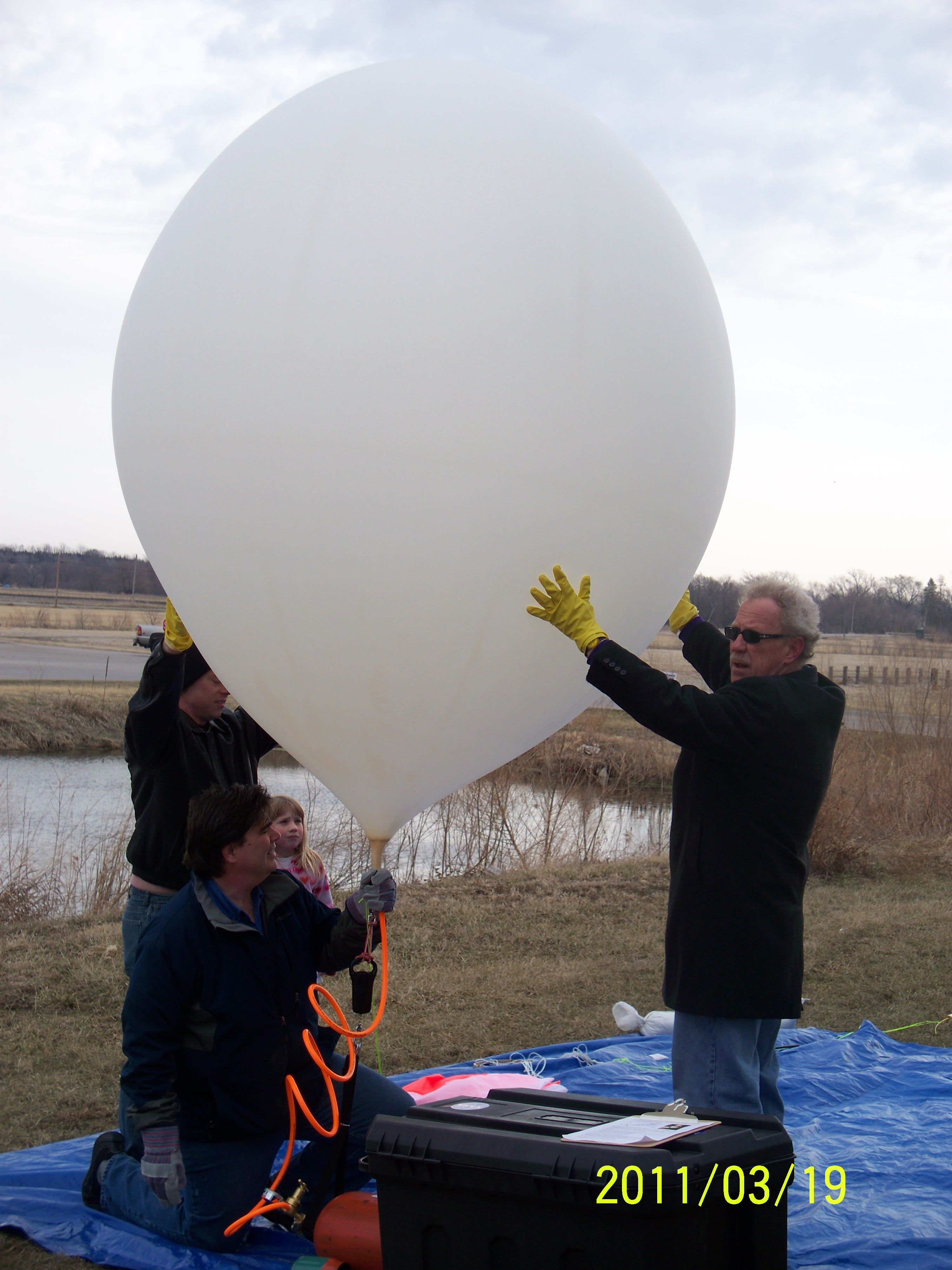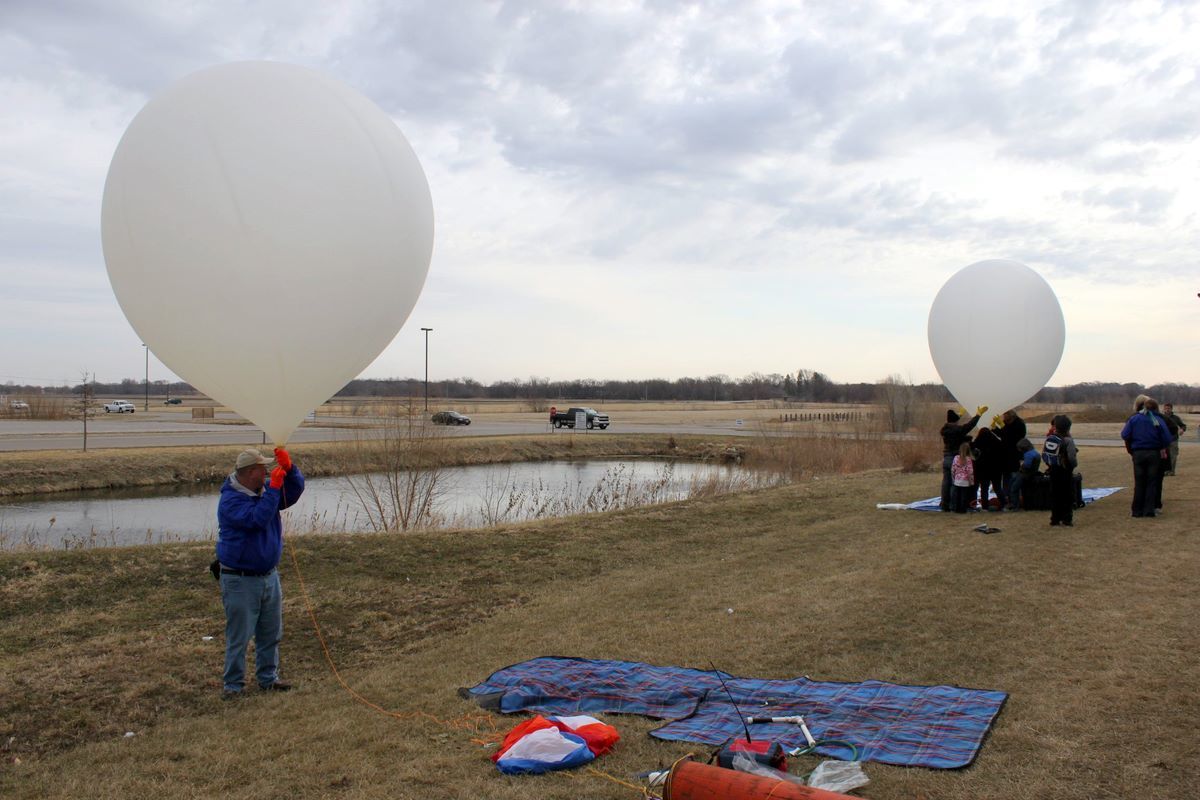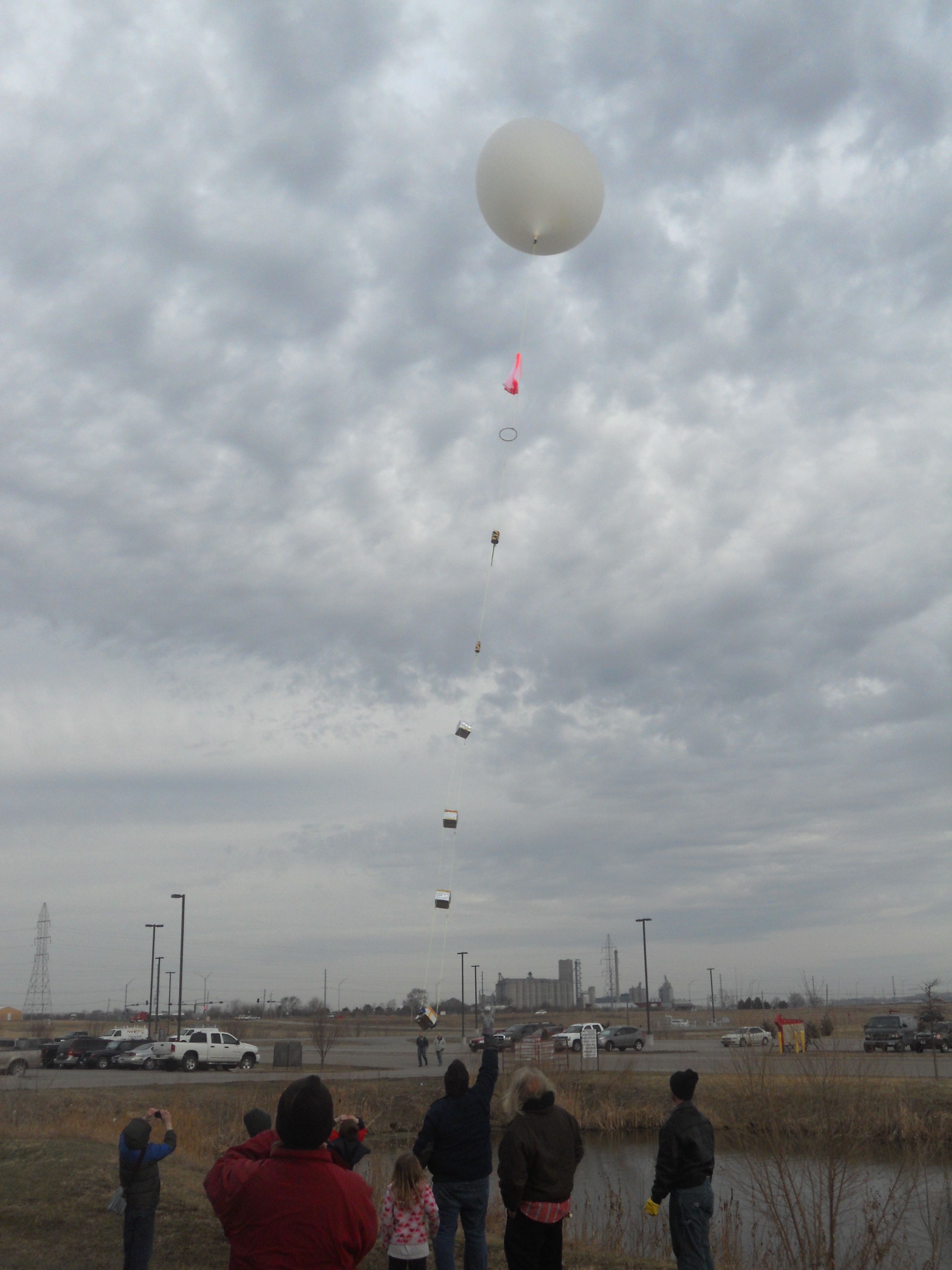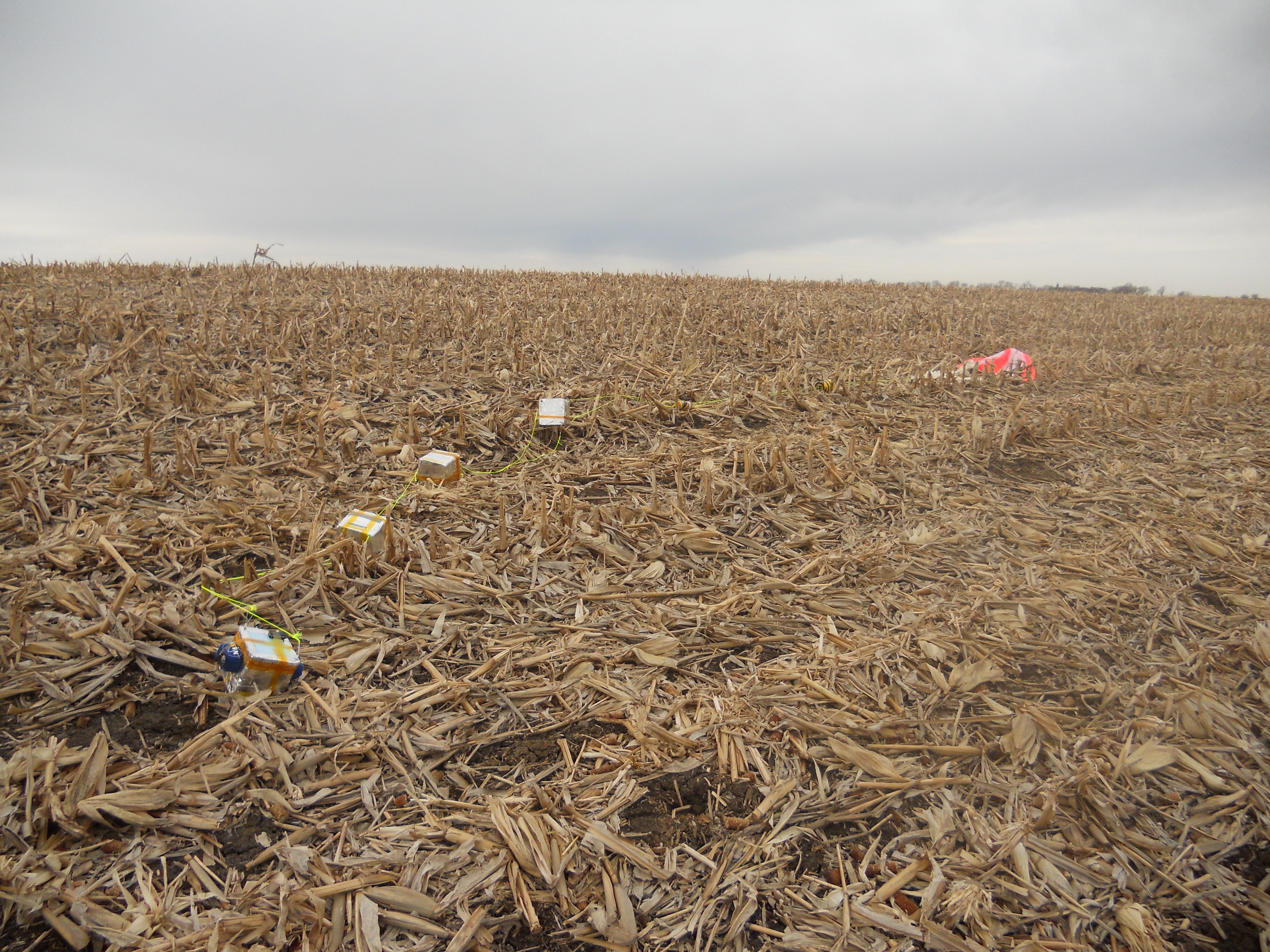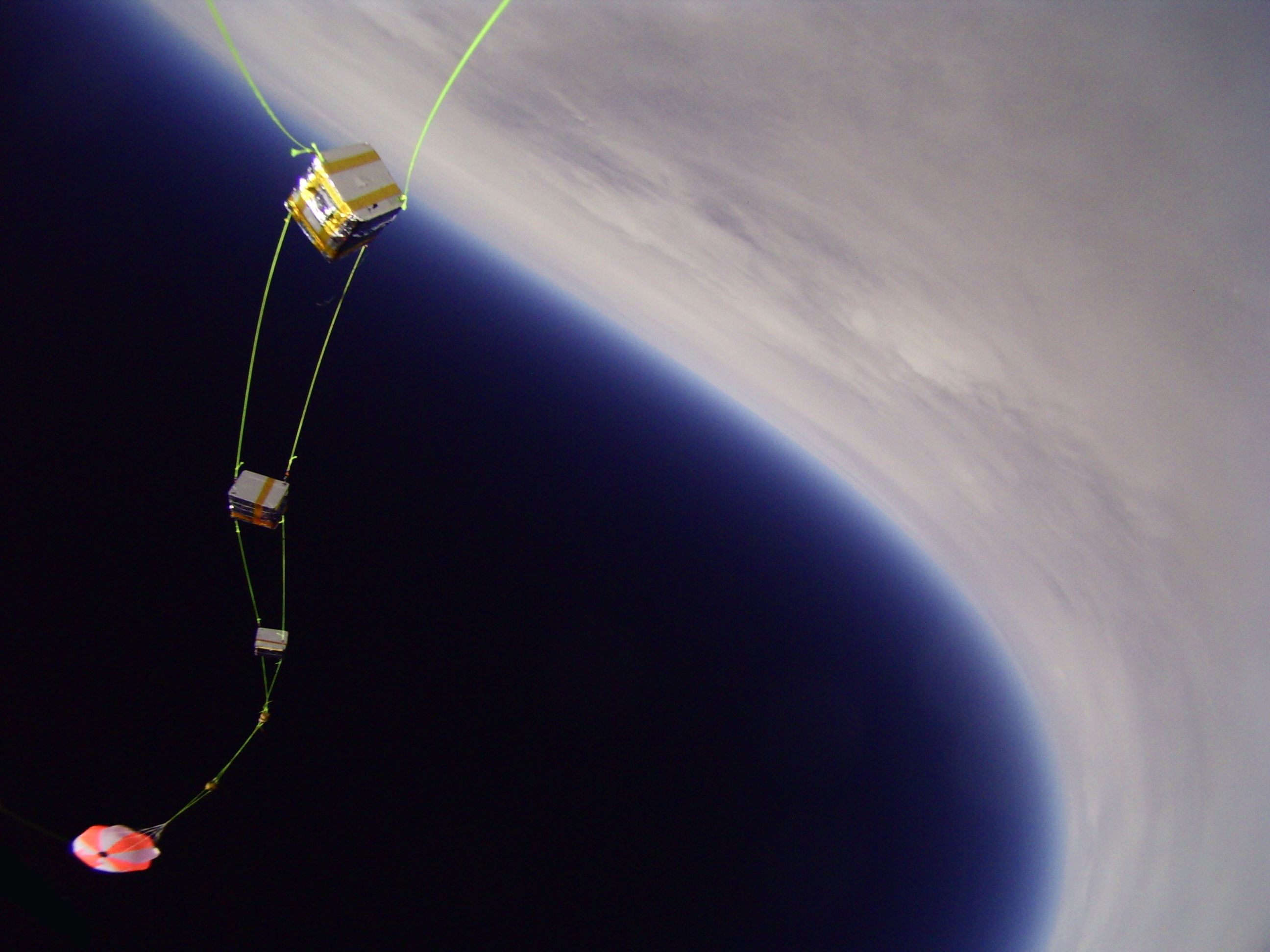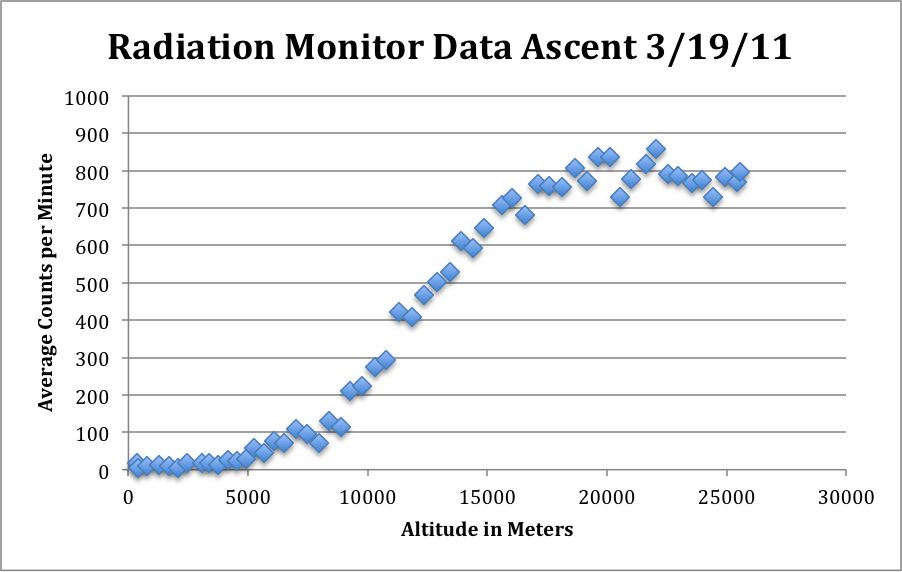About a month after our first launch, we wanted to provide students a chance to take additional data, especially those who did not get adequate data during our previous excursion. A few students took advantage of the opportunity. The NSTAR group was planning to launch a balloon from the Lancaster Center in Lincoln at a HAM radio convention and we decided to join them and make it a double launch.
Here is a photo of our entire set up with the parachute, command module, APRS, and the pods we made using styrofoam, carbon fiber tubes, emergency space blankets, and Kapton tape.
NSTAR and MCC preparing for double launch.
Before we let our balloon go, one clip failed as we were walking the string of pods up to be released, so the whole thing was hanging on by only one string. Michael was able to carefully pull it back down and we were able to quickly re-establish the connection and prepare to let it go.
And, it’s off!
Hooray! We solved the string crisis. Now, it was time to hop in the van and chase the balloon, but… the van battery was dead. The antenna and computer were running off the van battery and it was discharged when we turned the vehicle off while we were preparing for the launch. We had a charger with us and were able to jump start the battery without too much of a delay.
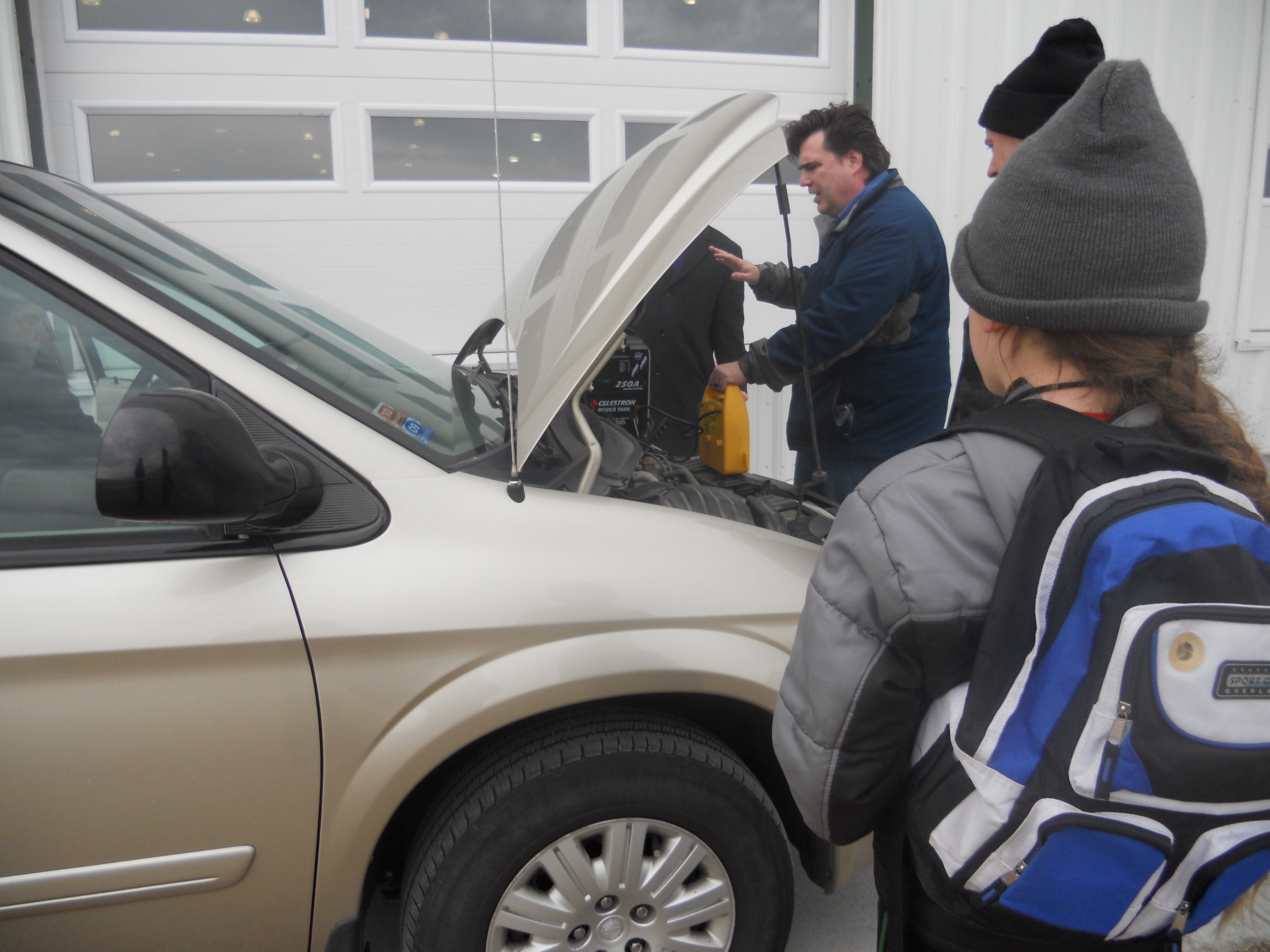
On the road heading into Iowa.
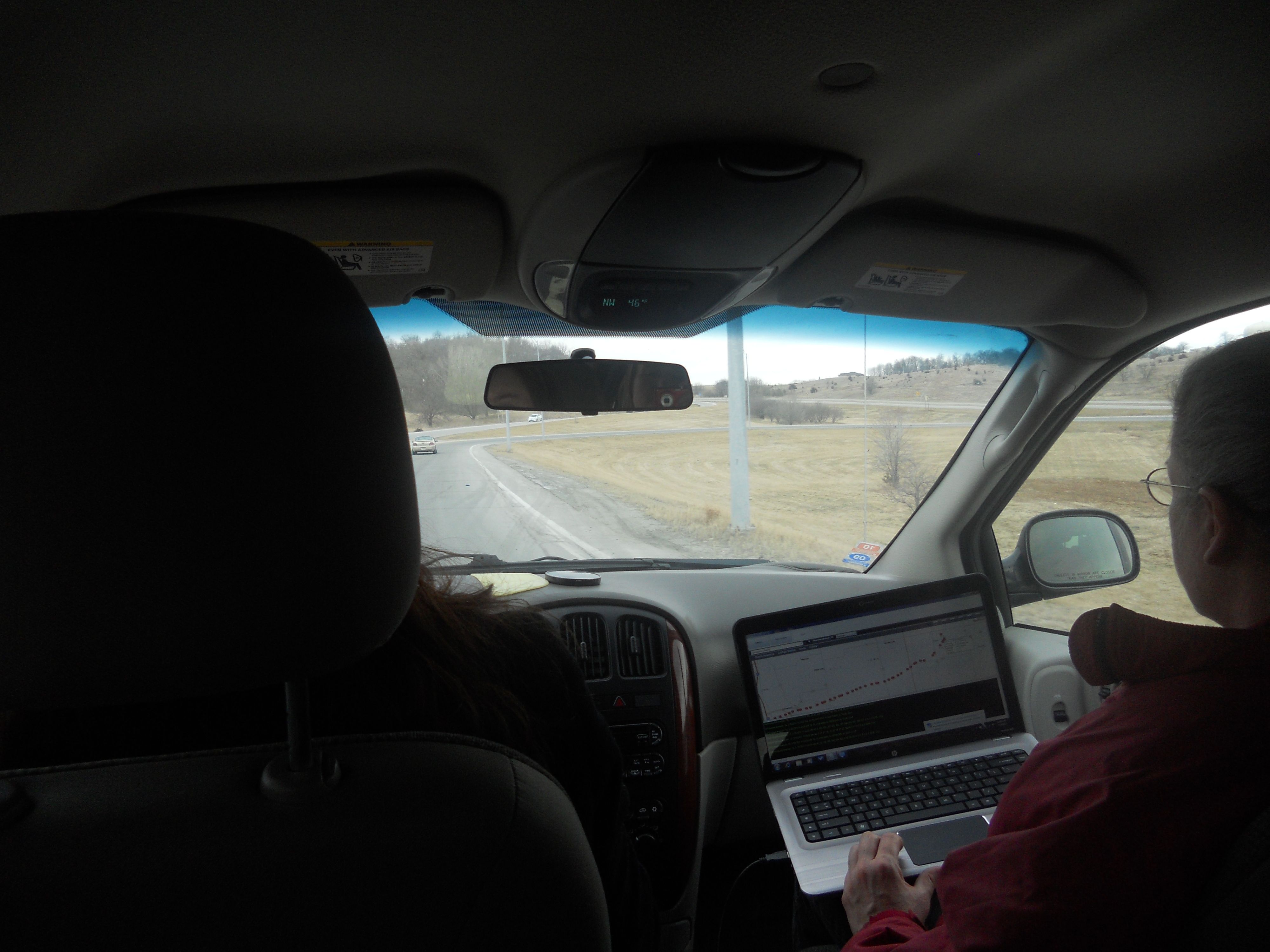
It landed in a plowed corn field and was an easy recovery.
After the recovery, we stopped for lunch at a restaurant in Council Bluffs. Unfortunately, in the hubbub while we were switching equipment between vehicles, someone stole one of the laptops (on loan from UNO/NASA Nebraska Space Grant) from the front seat of the van and took our personal camera bag including a DSLR Canon camera, a couple of lenses, extra batteries, and other accessories.* Luckily, we had a second laptop tracking in another vehicle, so we did not lose our precious data.
We also had the Go Pro cameras from the balloon with our photos from altitude. We got some nice photos but some of them looked a little weird. While the system is going through post-burst chaos (the time after the balloon bursts but before the atmosphere is thick enough for the parachute to inflate), the rolling shutter on the camera can make the limb of the Earth look a little funky. We call this image “High-Altitude Inception.”
We had a radiation monitor in one of the pods. It reported the counts every 6 seconds. Because we did not receive every packet of information sent from the command module, I went through and binned the values we did get for each minute and determined an average counts per minute. I graphed the values of counts per minute on the ascent and again on the descent (even though it was going through post-burst chaos) and they were very similar curves.
*Post Script: About a month after we purchased a new camera setup with the insurance money from the theft, we got a call from a pawn shop in Council Bluffs saying that they had a camera with our information listed on it. We were able to get everything returned, although our photos had been deleted, and it remains our backup system.

